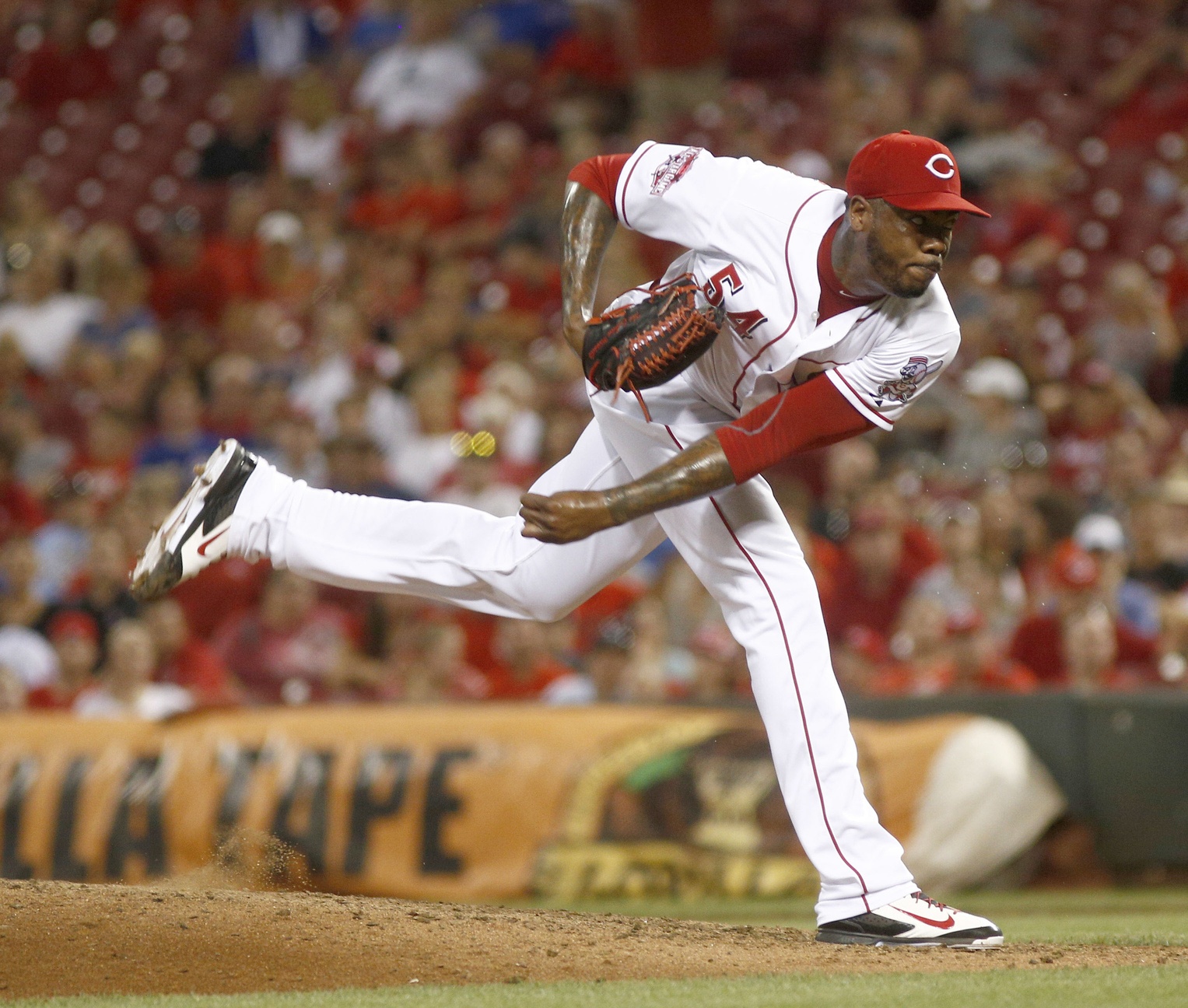The Yankees might have the best bullpen of all-time in 2016. Between Dellin Betances, Andrew Miller, and now Aroldis Chapman, manager Joe Girardi will have at his disposal a three-headed monster of fire-balling relievers to guide him through innings seven through nine.
Having an incredible bullpen will obviously help the Yankees. Besides thwarting comeback attempts and controlling close games, the Betances-Miller-Chapman trio will partially compensate for New York’s underwhelming rotation by lessening the starters’ pressure to pitch deep into games.
That said, it’s not clear that trading for Chapman was the best baseball move for the Yankees given their needs, farm system, and payroll situation (leaving aside the hazy moral implications of the trade).
For one thing, this move won’t dramatically improve the Yankees’ eighth or ninth-inning situations—Chapman over Miller in the ninth and Miller over Betances in the eighth are slight upgrades if upgrades at all. The real boost comes in the sixth and seventh innings, where Betances will be considerably better than anyone else Girardi could send to the mound. The question with this trade, therefore, is whether improving the middle innings is worth the money and prospects the Yankees gave up for Chapman.
The cost for the hard-throwing lefty wasn’t absurd, in part thanks to the domestic violence charge hanging over his head. The Yankees parted with four prospects, only two of whom ranked among the team’s top 30, according to Baseball America. They’ll pay Chapman somewhere around $13 million after arbitration, a reasonable cost for a player of his caliber.
In the old days of King George Steinbrenner, when no cost was too great for the Evil Empire, this would have been no problem. The Yankees would slot Chapman in the bullpen and go spend big on a starting pitcher or maybe right fielder. But the team’s new reality includes financial prudence, which means assets spent on Chapman can’t be spent elsewhere. And if the Yankees fail to improve their starting rotation because they don’t have the money or prospects to bring in an upgrade, or if they end up a starting pitcher or infielder short one day because Rookie Davis and Eric Jagielo are gone and ownership won’t spend more to fill the holes, the Chapman trade will be a failure. Because when you’re balling on a budget, as the Yankees are, you don’t buy a Lamborghini when a Honda will do, especially if you still need to save up rent money.
Instead of filling a hole, the Yankees built on a strength. This is a fine strategy when there’s room for excess—signing a fourth elite starting pitcher when you already have three makes sense because all of them fit in a rotation—but not so much when there’s a playing-time crunch. And though Betances, Miller, and Chapman will all contribute to the 2016 Yankees, each of their respective values is diminished by the presence of the others. In a traditional bullpen, the second-best reliever doesn’t pitch as often as the best, and the third-best doesn’t pitch as often as the second-best. While Chapman, Miller, and Betances are all capable of throwing 210 combined innings in a season, there likely won’t be opportunity for all three to do so. More likely, the trio will combine for something like 180 frames. So because Chapman will take innings away from Betances and Miller, he’s not really adding 70 innings of elite relief, but something more like 40. An elite reliever is most valuable in an otherwise empty bullpen in which he’s stealing innings from replacement level bums, not in a stacked ’pen where he’s taking opportunities from All-Stars. The more top relievers you add, the more the returns inherently diminish.
There’s another reason most teams don’t have Dellin Betances-level relievers pitch the seventh inning (besides the fact that Betances-level relievers barely exist): It’s not that hard to find guys capable of handling 50-60 innings of medium-leverage work. Last offseason the Yankees got Justin Wilson for a backup catcher. In other years Girardi has found productive innings from non-prospects or cheap castoffs like Shawn Kelly, Boone Logan, Clay Rapada, Luis Ayala, and Alfredo Aceves. Dave Robertson wasn’t a highly touted prospect. Betances himself was a failed starter. A shrewd team will create valuable relievers from nothing, not spend big to acquire them.
Instead of trading for Chapman to push Betances to the seventh inning, the Yankees could have signed someone like Mark Lowe, Steve Cishek, or John Axford on the cheap or used Bryan Mitchell or Ivan Nova in middle relief. Heck, they could have kept Wilson for a fraction of Chapman’s price. Or they could have held onto Adam Warren and instead used half of the package that got them Chapman to acquire Starlin Castro. Any of these options would have moderately hurt the Yankees in the sixth and seventh inning but saved the team millions of dollars, several prospects and some potential headaches if Betances or Miller ends up dissatisfied with a diminished role (not to mention the moral and practical pitfalls that come with the domestic violence allegation).
Deep, menacing bullpens are baseball’s latest fad, ushered in by the two-year success of the Kansas City Royals. And sure, it’s cool to have three shutdown arms that can end a game in the sixth inning. But an optimal allocation of the Yankees’ resources would distribute the money and prospects spent on Chapman toward a starter, an outfielder, or next year’s trade deadline. Chapman will be fun, but for a team that’s increasingly thrifty, he wasn’t the right allocation of resources.
Lead photo courtesy of David Kohl-USA TODAY Sports

Your points regarding payroll (no matter what the Yankees say it’s hard to believe this is a real concern) and especially diminished returns are understood, but when a team has the opportunity to add an elite game changer like Chapman they should seize that opportunity every time as it’s these type of players that can truly set them apart from their competition.